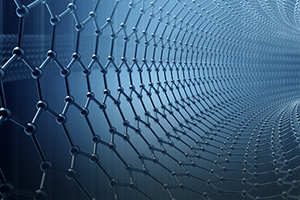Three-Dimensional Graphene
 Graphene—a two-dimensional form of carbon that’s only one atom thick—is considered to be the strongest, thinnest and most conductive material known to man. At the same time, it’s incredibly flexible, transparent and a perfect barrier that even helium cannot pass through. It’s no wonder that for more than a decade now, finding potential applications for this revolutionary material has been one of the fastest-growing areas of research.
Graphene—a two-dimensional form of carbon that’s only one atom thick—is considered to be the strongest, thinnest and most conductive material known to man. At the same time, it’s incredibly flexible, transparent and a perfect barrier that even helium cannot pass through. It’s no wonder that for more than a decade now, finding potential applications for this revolutionary material has been one of the fastest-growing areas of research.
In its two-dimensional form, graphene has been considered impractical for building purposes, but a team of scientists recently developed a method for creating a three-dimensional geometry out of graphene using a combination of heat and pressure. The resulting material, although porous and lightweight, was shown to be 10 times stronger than steel, with only 5 percent of the density. Used in construction, lightweight, three-dimensional graphene could dramatically reduce labor and shipping costs. It could also be used as a filter for water or air to create greener buildings. And since carbon is mechanically and chemically stable, the material is environmentally friendly as well.
One big drawback is that graphene is prohibitively expensive for use in large-scale construction. However, other organic molecules like proteins, cellulose and silk may also be designed with a similar porous geometry.
Perhaps the most exciting application is in space. A structure of three-dimensional graphene could conceivably extend beyond the earth’s atmosphere, bringing the idea of a space elevator for shipping supplies to build space stations and even space colonies one step closer to reality.
For information: Zhao Qin, Massachusetts Institute of Technology, 77 Massachusetts Avenue, Cambridge, MA 02139; phone: 617-999-6883; email: qinzhao@mit.edu; website: https://cee.mit.edu/